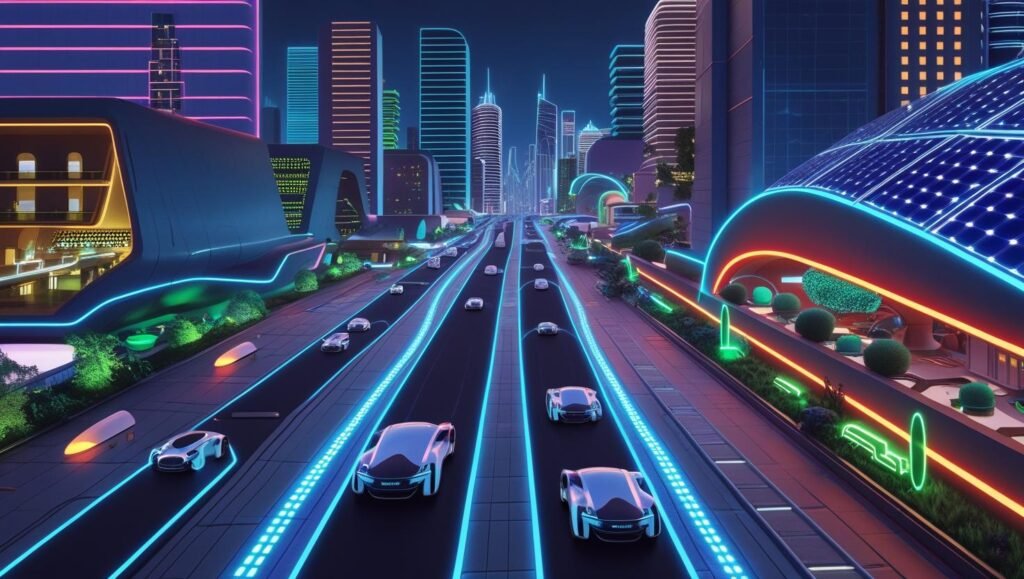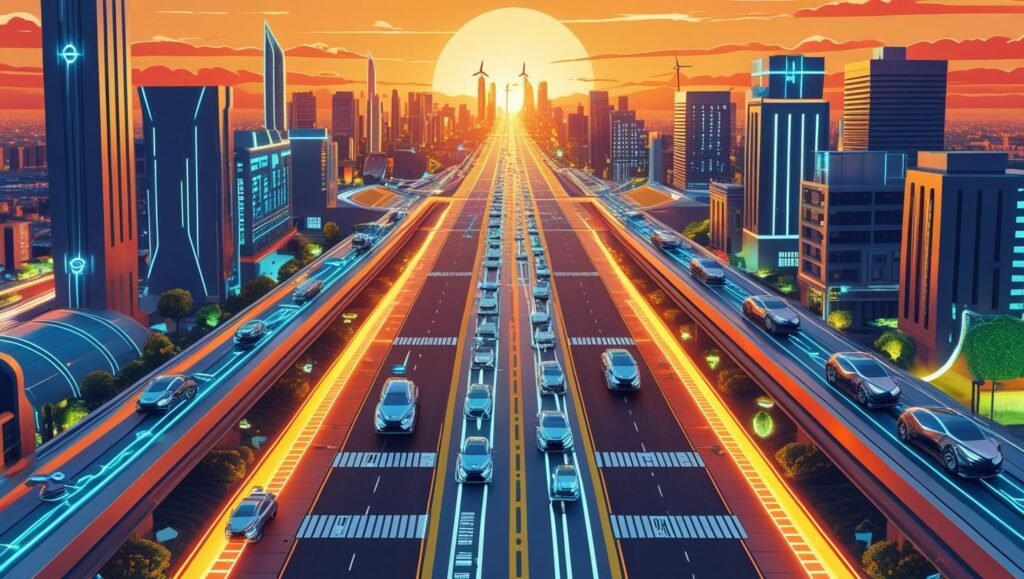Smart Cities: Top Tech for Future Urban Growth

Picture a city where traffic lights adjust to keep cars moving, streetlights save energy by dimming at night, and trash bins signal when they’re full. That’s the promise of Smart Cities! These are places where technology makes life easier, cleaner, and more connected. By using tools like the Internet of Things (IoT), Smart Cities solve everyday problems like traffic jams and pollution. But what technologies are making this happen? Let’s dive into the top tech trends shaping the future of urban growth and why they matter.
What Are Smart Cities?
Smart Cities use technology to make urban life better. Sensors, apps, and networks work together to manage resources like energy, water, and transportation. The goal? Create cities that are sustainable, efficient, and great to live in. From reducing waste to improving safety, Smart Cities are changing how we live in urban areas.
Top Technologies Powering Smart Cities
IoT Sensors: The Heart of Smart Cities
IoT sensors are small devices that collect data from the world around them. In Smart Cities, they’re on roads, buildings, and even streetlights. For example, in Singapore, sensors track traffic patterns and adjust signals to prevent jams. This saves time for drivers and cuts down on fuel use. These sensors send data to city systems, helping leaders make smart choices. But managing all that data isn’t easy—there’s more to explore!
Smart Grids for Energy Savings
Energy is a big deal in Smart Cities. Smart grids use IoT to monitor how much electricity a city uses in real time. In Copenhagen, streetlights dim when no one’s around, saving power. These grids also make it easier to use renewable energy, like solar or wind, which helps the planet. They balance energy loads to avoid blackouts. Curious about how they keep everything running smoothly?
Smart Waste Management
Nobody likes overflowing trash bins. In Smart Cities like Seoul, bins have sensors that alert workers when they’re full. This means trucks only collect trash when needed, saving fuel and keeping streets clean. It’s a simple idea with big benefits: less pollution and lower costs. But scaling this tech to bigger cities comes with hurdles.
Environmental Monitoring for Healthier Cities
Smart Cities care about the environment. IoT sensors track air quality, noise, and even water purity. In Barcelona, air quality sensors share data with residents through apps, helping them avoid polluted areas. This tech helps city leaders make decisions, like limiting traffic in high-pollution zones. It’s a step toward healthier urban living, but there are challenges to making it work everywhere.

Why Smart Cities Matter
These technologies aren’t just cool gadgets—they change lives. Smart Cities reduce traffic, save energy, and make urban areas cleaner. They help cities grow without harming the environment. For example, IoT systems can cut carbon emissions by optimizing how cities use resources. Plus, they make life more convenient, like finding parking spots faster. Who wouldn’t want that?
But it’s not all smooth sailing. Smart Cities face big challenges, like keeping data safe from hackers. Imagine if someone hacked a city’s traffic system—chaos! There’s also the question of cost. Building a Smart City takes a lot of money, and not every city can afford it. How do we make this tech fair for everyone?
[Article stops here to keep it incomplete. Want to know the challenges holding Smart Cities back and what’s next for urban tech? Dive into our full research paper for the answers!]
[Read the Full Research Paper]




